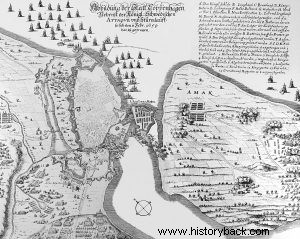
The "little" or First Northern War (1655-60) was one of the most important though lesser-known conflicts that made little Sweden a pan-European power. The Swedish king Charles Gustav, facing Poland (Polish-Lithuanian Commonwealth), Russia, Prussia, Austria, Denmark and the Netherlands, had managed, in 1685, to put Denmark almost out of the fight.
Although the Danes after a series of defeats asked for peace, the Swedish king decided instead of making peace to eliminate Denmark from the list of European states. His troops also occupied most of Denmark, except for the capital Copenhagen. It was precisely this obstacle that the Swedish king wanted to eliminate and besieged the city. However, in October 1658 a Dutch naval squadron defeated the Swedish navy and "broke" the blockade of Copenhagen by transporting supplies and a few soldiers.
The opponents
Copenhagen had already been under siege and bombardment for six months and the Swedish king judged that he might now make a final assault to capture it, before the Dutch fleet could further reinforce the Danes. However, information of the impending Swedish raid was made known to the besieged by spies, and the Danes waited in readiness as long as possible.
The Danish king Frederick III had about 12,000 (the 2,000 Dutch) men at his disposal, but most of them were not soldiers. The rest were civilians equipped with every available weapon, muskets, saris, "ancient" arquebuses, even scythes...
The soldiers took over the defense of the "citadel" (Kastelet) and the fort on the island of Slotsholmen, which guarded the area near the harbor. The students of the university of Copenhagen voluntarily formed a military department and placed themselves at the disposal of the king. The Swedish king had at his disposal about 10,000 experienced and almost invincible, until then, soldiers.
Supply!
On the night of February 9, 1659, the Swedes set out. The first raids were launched against Schlotsholmen and the walls in the area of Christianshavn but were repulsed . The Danes captured a bridge of the enemy's assault, by which the Swedes would cross the Danish trench, which they measured and found to be about 11 m long.
So to make the bridges useless they decided to widen the moat. Working feverishly, along with 600 Dutch soldiers, they managed to widen the trench which was now 13.5m wide. The weather also helped the Danes as thick snow fell throughout the night which covered their movements, from the eyes, if not the ears, of their opponents.
On February 10, a few hours before the Swedes launched a general attack, the widest trench was ready. Shortly after midnight, in the early hours of February 11th, the Swedish veterans set out with their war yacht (Ga Pa =upon them) vibrating in the frozen night.
But they soon found themselves, to their surprise, unable to cross the ditch. Unable to move, they received the fatal fire of the defenders from a short distance and were cut to pieces... Nevertheless, with fierce courage and persistence, some of them managed to climb the walls. There they found themselves fighting hand to hand with the determined Danes.
Finally those who climbed the wall were crushed. Then the Swedes tried a fresh attack at another point, but fell into an ambush set by the Danes, and retreated with great loss. The battle continued until dawn when the exhausted Swedes retreated having suffered at least 1,700 casualties, compared to only 14 for the Danes. The Swedish king, despite his defeat, nevertheless abandoned the siege.
However, in the spring a new Dutch naval squadron arrived in the city, cutting off the sea supply of the besiegers. After this the surviving Swedes withdrew from a large part of Denmark. The final peace treaty was signed in 1660. Based on this, the borders were maintained as they were before the outbreak of war. Sweden won nothing.



